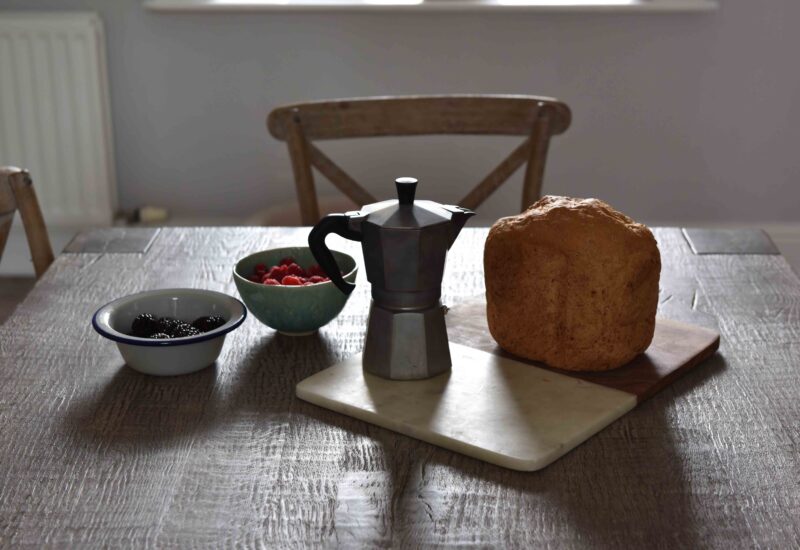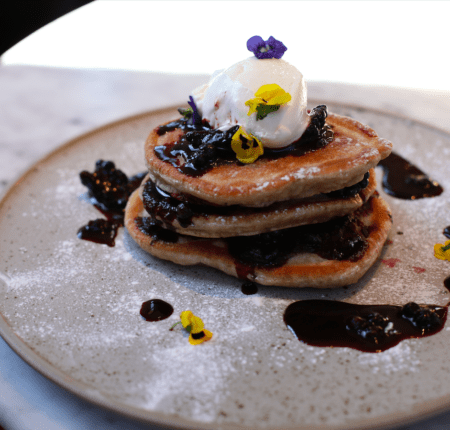When I first journeyed into the world of free-from baking I discovered so many different, diverse ingredients, all new to me with very different flavour profiles and textures than I had been used to with traditional baking.
My first hurdle was gluten free flour. Whilst I knew I could get great results from using gluten free flour, my first attempts never seemed to work. Through trying, testing, learning and baking I found that different flours supported different recipes better than others. With some flours more moisture was needed, with others a slower baking time. All these elements matter in order to create that perfect gluten free bake.
In my guide to gluten free flours I will be talking about 3 of my favourite blends: brown rice flour, buckwheat flour and oat flour. I’ll be looking at the ingredient itself, the health benefits the flour holds, the taste and how best to use it. To inspire you to try out these flours I’m sharing a delicious sweet or savoury recipe you can bake for each. Let’s get stuck in…
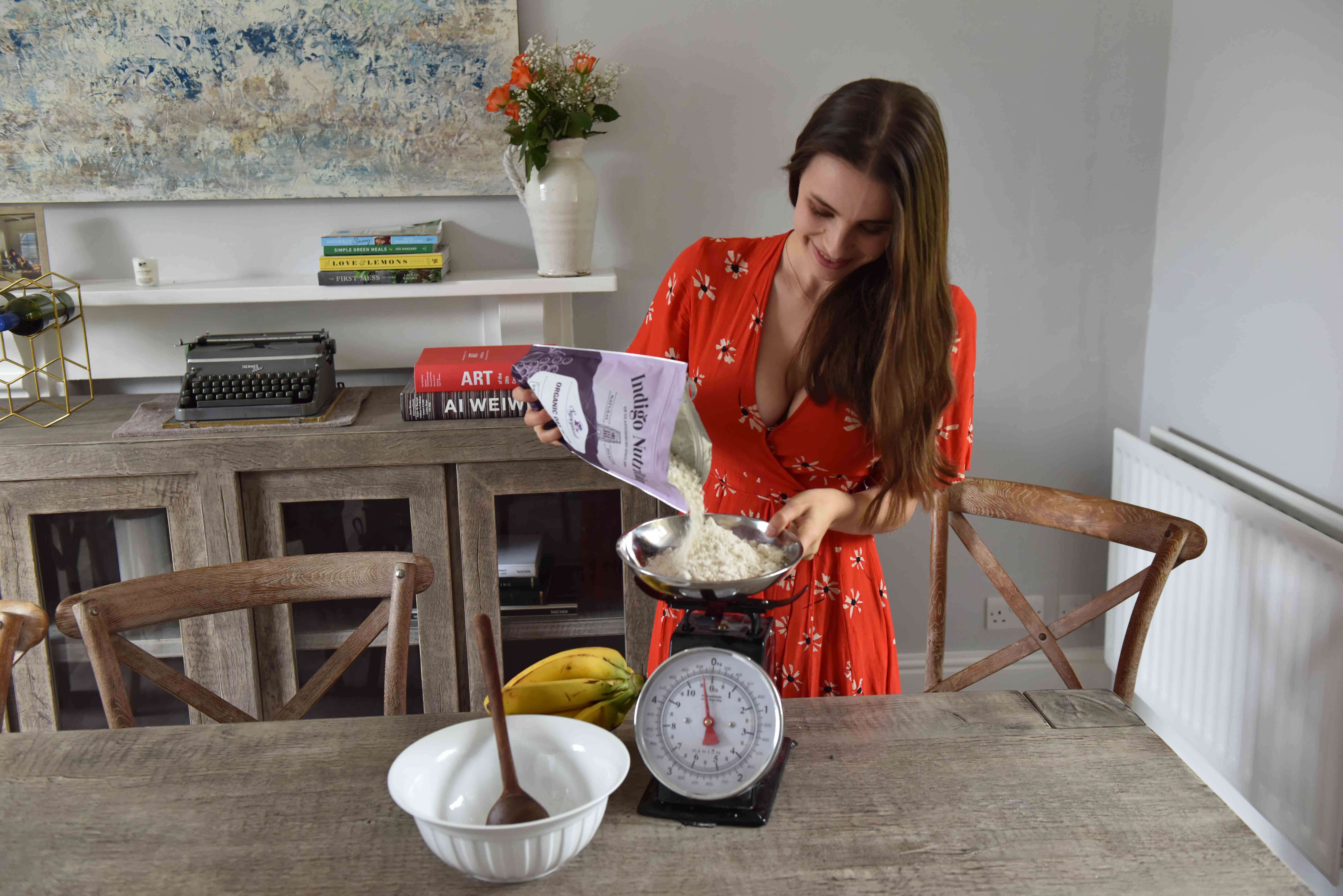

Buckwheat Flour
What is buckwheat flour?
This flour is made from buckwheat groats milled into a fine flour. This ancient grain-like seed has been providing health benefiting nutrition for the best part of 8,000 years! Buckwheat, despite the name, is not actually related to wheat or a member of the grass family. It is a pseudo cereal related to sorrel, docks, rhubarb and knotweed.
Buckwheat has some fantastic health benefits worth noting. In comparison to many whole grains it has a very low glycemic index, which means that the carbohydrate content in the pseudo-cereal is absorbed slowly through the bloodstream, giving you a steady flow of energy and not a quick spike and crash.
For every one cup of buckwheat groats that are milled into flour, it provides you with 6 grams of dietary fibre, which is important for a healthy heart and digestive system. Buckwheat is also a great source of digestible plant protein, with every 100 gram serving giving you 14 grams of protein with 12 different amino acids. Whilst beans and legumes hold a higher plant protein content per gram, buckwheat does contain more than most whole grains.
What does buckwheat flour taste like?
Buckwheat flour has a rustic, rich, nutty and slightly earthy flavour. This strong flavour profile can often be too overwhelming for a flour swap in a traditional recipe, and I find best used in partnership with another flour such as the two below.
How to use buckwheat flour
Buckwheat goes well paired with warm, rich flavours such as chocolate, coffee, nuts, cinnamon, and ginger. It’s also great used in savoury tarts with root vegetables such as squash, parsnips, carrots and sweet potato.
Buckwheat Pancakes
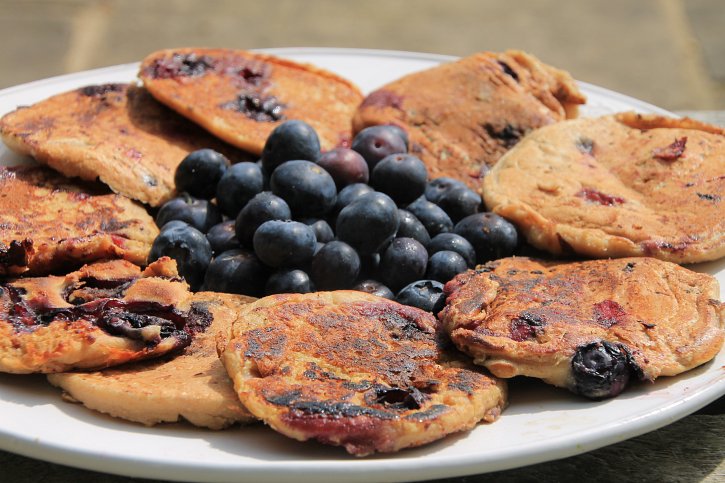

Ingredients
- 75g buckwheat flour
- 1tsp baking powder
- 1 free-range egg
- A pinch of salt
- 75ml oat milk
- 80g blueberries
- 1tbsp coconut oil
Method
Place the flour and baking powder in a large bowl and mix together well. Beat in the egg and milk, mixing well. Stir in the blueberries.
Place a pan on medium heat and add a teaspoon of coconut oil. Once melted, pour the batter into the pan to make two circles. When small bubbles appear on the surface of the pancakes it’s time to turn over and cook the other side.
Brown Rice Flour
What is brown rice flour?
Brown rice flour is one of my favourite gluten free flours, and I find it creates the best results over buckwheat and oat in “traditional” bakes. Organic brown rice flour is high in vitamins B1 and B6, which are both crucial nutrients for the central nervous system. B1, also known as thiamine, is found in a variety of foods such as fortified cereals, macadamia nuts, beans and lentils. B1 assists in the proper development of the myelin sheaths around the nerves, improving the body’s ability to withstand stress.
What does brown rice flour taste like?
Brown rice flour has a mild, nutty and slightly sweet taste. When compared to regular wheat flour, it has a much grittier consistency, but a pleasant taste.
How to use brown rice flour
Brown rice flour often requires you to add more liquid to a recipe than may be instructed with regular flour. To make sure the recipe isn’t too dry I’ll often add apple sauce, coconut oil or an extra egg.
Vegan Brownies
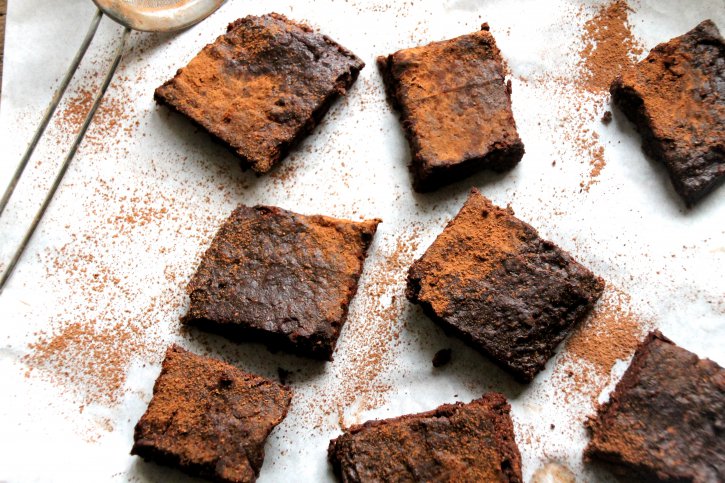

Ingredients
- 1 cup pecan butter (*See below)
- 1.5 cup medjool dates
- 1/4 cup chia seeds (4 tbsp)
- 3/4 cup water
- 1/2 cup brown rice/oat/almond milk
- 1/3 cup coconut oil
- 1 cup brown rice flour
- 1/2 – 3/4 cup cacao powder
- 1/2 cup maple syrup
- 1 tsp baking powder
*For the pecan butter, you can alternately place 2 cups of pecans into a food processor and blend until smooth – like a nut butter.
Method
Preheat the oven to 175°C.
In a bowl combine the chia seeds and the water and then leave for 15 minutes.
In a blender put the melted coconut oil, Medjool dates, pecan butter, almond/rice milk, maple syrup and blend until smooth. Don’t worry if it’s not 100% smooth, a few little pieces of dates adds texture!
In a bowl combine the baking powder, brown rice flour, salt and cacao powder.
Pour the mixture out of the blender and combine with the flour, salt, baking powder and cacao and add the soaked chia seeds.
Put into a lined tray about 2 inches thick is ideal, and put into the preheated oven for around 35 minutes. Or until you can insert a knife into it and it comes out clean.
Take out the oven and leave to cool. Cut into squares and serve!
Oat Flour
What is oat flour?
Oat flour is a whole-grain flour made from ground oats. It’s a great nutritious alternative to regular flour, containing soluble fibre in the form of indigestive sugars called beta-glucans. Along with oats soluble fibre is found in foods such as beans and flaxseed. Soluble fibre slows digestion and helps you absorb nutrients from food. It helps reduce cholesterol and blood sugar levels and promotes healthy gut bacteria.
What does oat flour taste like?
Porridge! Oat flour has a very familiar taste to most, reminiscent of porridge and muesli, making it great for breakfast bakes.
How to use oat flour
Oat flour is my latest go-to, a flour that works so perfectly for sweet bakes such as oatmeal cookies or as a binder to savoury dishes, such as my nut roast.
Apple Oat Muffins
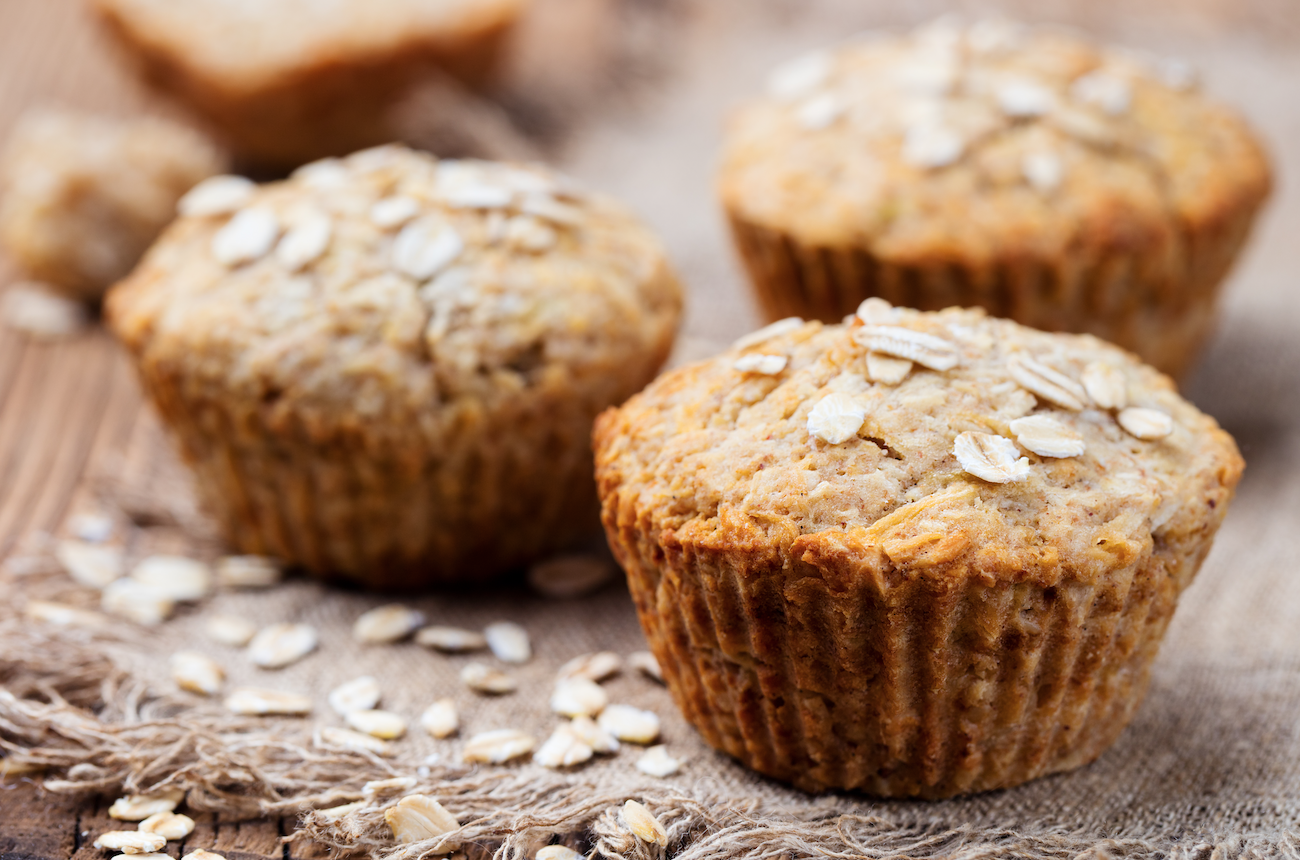

Ingredients
- 1 1/2 cups oat flour
- 1 cup oats
- 2 teaspoons cinnamon
- 2 teaspoons baking powder
- 1/4 teaspoon salt
- 1 cup oat milk
- 1 egg
- 1/2 cup maple syrup
- 1 tsp vanilla extract
- 1 cup dried apple
- 1/2 cup sunflower oil
Method
Preheat the oven to 180ºc.
In a bowl mix together the oat flour, oats, cinnamon, salt and baking powder.
In a separate bowl combine the oat milk, maple syrup, vanilla extract and beaten egg. Once combined slowly whisk in the sunflower oil.
Mix together the wet and dry ingredients. Let the mixture sit for 15 minutes.
Dice the apple, and fold into the mixture.
Place 12 muffin liners into a muffin tray, use a small measuring cup (roughly 1/4 cup) to scoop the batter into the muffin liners.
Place into the oven to bake for 20-25 minutes, until golden brown on top.
This article is sponsored by Indigo Herbs

